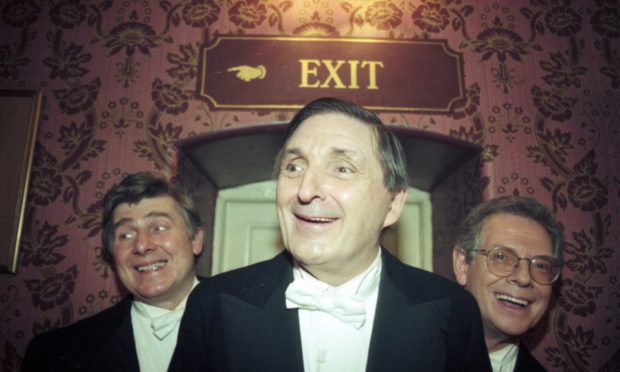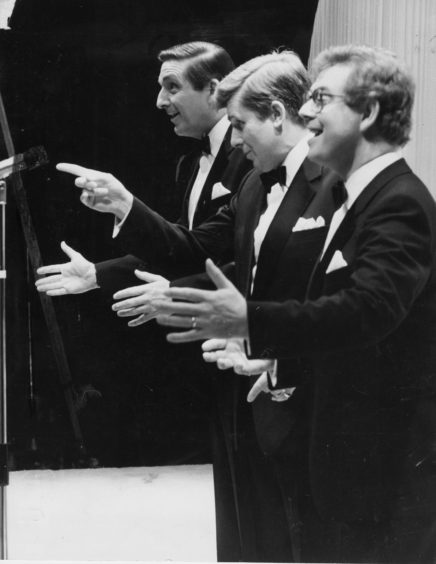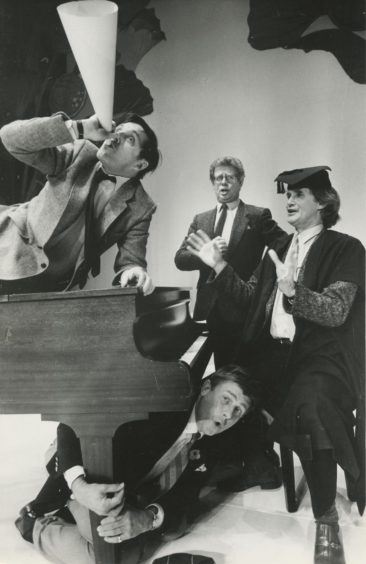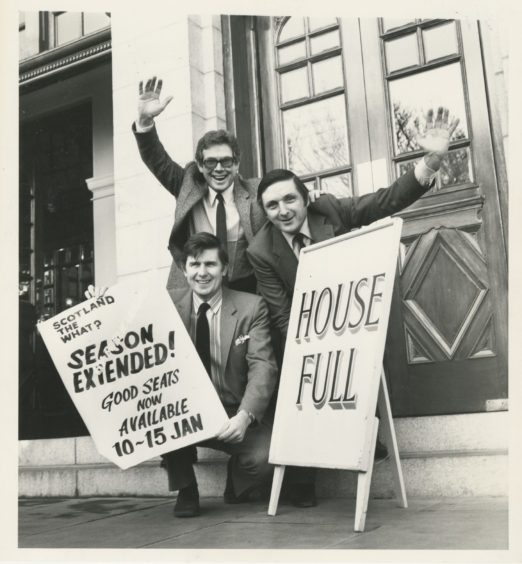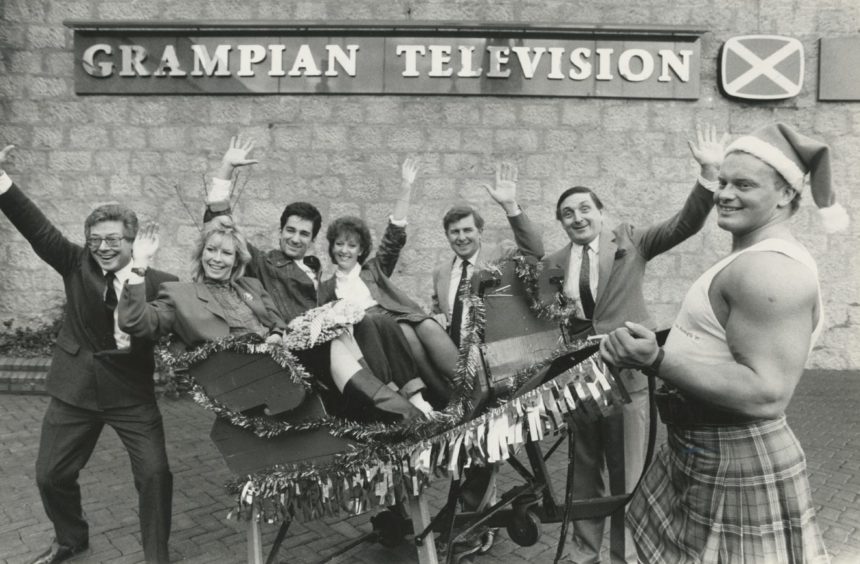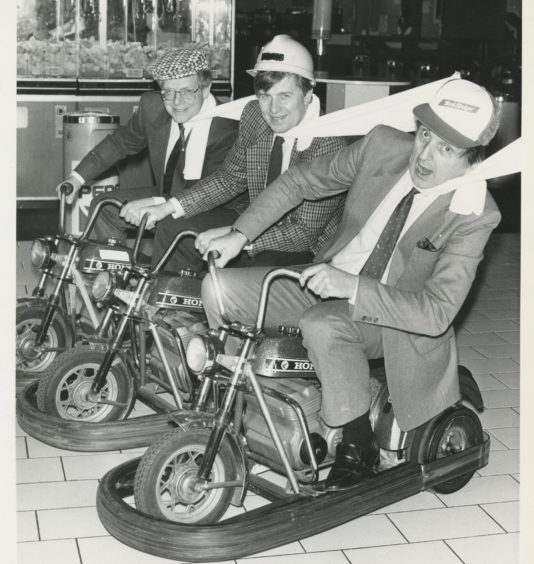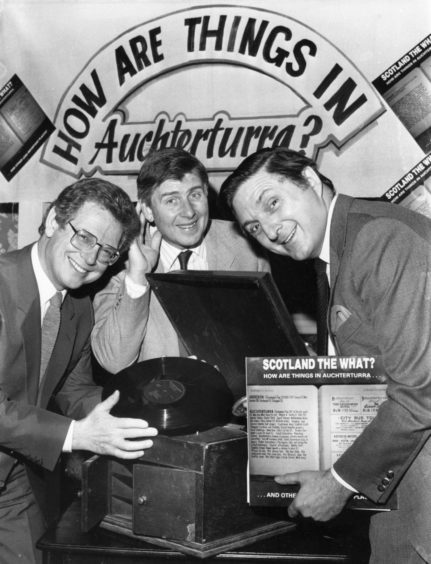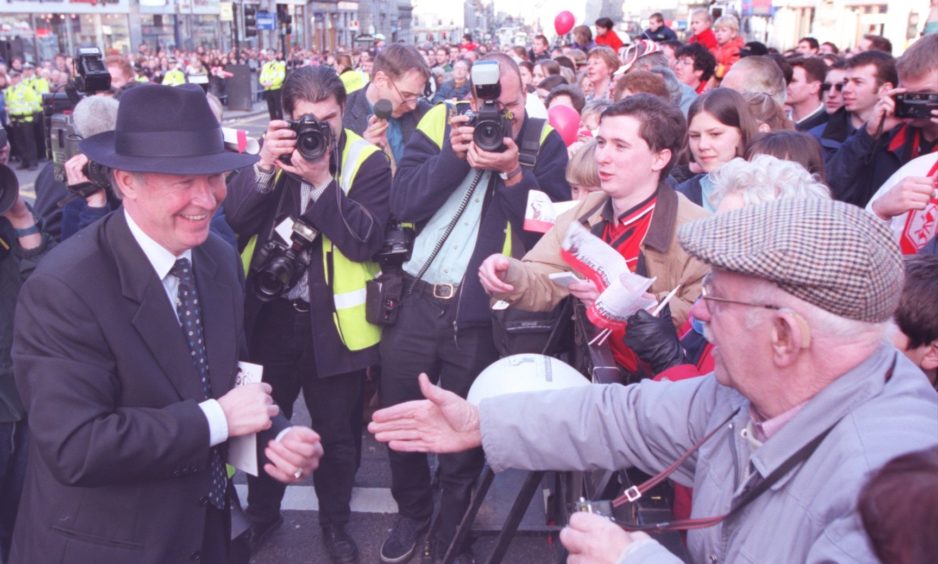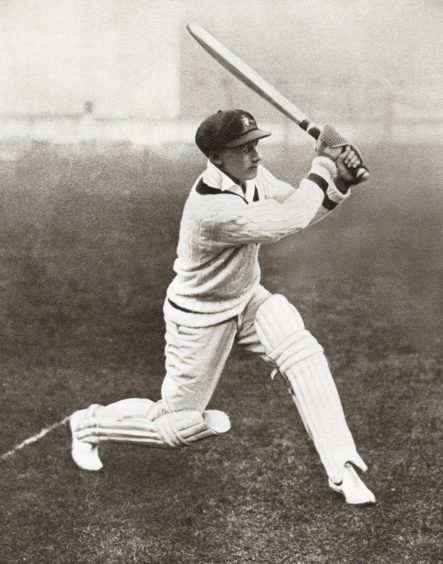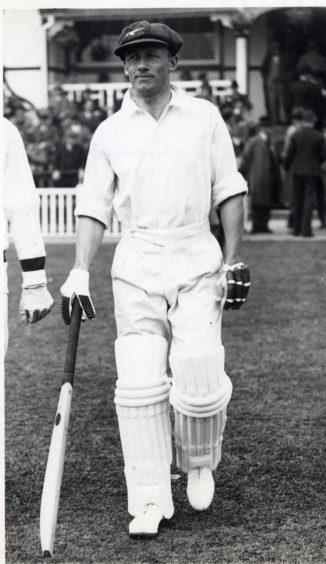Comedy trio Scotland the What? created their own little world in the north-east and ended up gaining the Freedom of Aberdeen.
And although William “Buff” Hardie is the only surviving member following the death of his friends George Donald and Steve Robertson during the past decade, he knows they sparked indelible memories wherever they travelled and became as much a part of the north-east landscape as granite and Grassic Gibbon.
Buff might be 89, but when we talked to him about comedy, cricket (a lifelong passion) and what inspired him to join forces with his old confreres, he was in his element, even as he recalled the circumstances which brought the three men together in the 1950s.
It might be 25 years this month since their final performance at His Majesty’s Theatre on November 25, where they engaged in their traditional handshaking ritual as the prelude to leaving their audience in stitches, yet Scotland the What? have left behind a treasure trove of videos, photographs and other pieces of memorabilia which testify to their success.
Curtain call
The curtain might have been drawn on the fictional Aberdeenshire village of Aucherturra, where they devised so many sketches and songs, many in the Doric tongue, but these blithe lads have left a legacy as famous as Brigadoon.
And they blazed a trail despite a marked lack of encouragement from their loved ones.
George Donald, for instance, told the story of when his mother took him to see Cornel Wilde playing the part of the composer Chopin.
And, when the scene arrived in the film where the dark red drops of blood – a result of his tuberculosis – fell onto the white keys, his mum turned to him and whispered: “See, George, that’s what you get for playing the piano”.
Buff, for his part, was interested in musical theatre and was determined to go and watch the D’Oyly Carte company when they journeyed to Aberdeen for a Gilbert & Sullivan operetta.
As he recalled: “I really wanted to see it – and by this stage, I was in my 20s – but I can remember my father saying to me: ‘Fit div ye wint tae ging an’ see that for – it’s jist a lot o’ folk singin!’ Which was an accurate, if somewhat superficial summing up of the whole business, I suppose.”
Thankfully, none of them were deterred by this early scepticism. On the contrary, they started developing local characters, refining little vignettes, immersing themselves in a world which was both parochial and universal, couthy and classy, and they eventually produced a show Running Riot, which was such a hit in Aberdeen that they decided to take it down to the Edinburgh Festival Fringe.
Sense of adventure
Nowadays, it would have found itself in competition with thousands of other events across Auld Reekie, but as Buff told me: “There was a sense of adventure about it and, back in 1969, the Fringe was still intimate and nothing like the huge monster it has now become, so we were all pretty keen on the idea.
“You never know how these things will work out, but we were lucky. We were performing in a small church hall and we had put together a late-night hour-long revue which we called Scotland the What?
“Our pitch was: ‘Three men, two chairs, one piano – and the promise that you won’t leave without laughing’.
“Well, we went ahead, and one of the first people who saw us was the acclaimed critic, Neville Garden, who later became a successful broadcaster, but was then carrying out the role as festival reviewer for the Daily Express.
“The night he came along to watch us, he had just sat through four hours of Wagner at the Usher Hall and was ready to laugh at anything – which he did.
“The next thing, his crit in the paper proclaimed that he had just seen ‘the funniest show in the festival’ and when we were also given a positive review in the Scotsman by Allen Wright, the whole thing took off very quickly and we never really looked back after that.”
There were no airs and graces about these characters. They didn’t preach to their audience, but worked patiently, methodically on producing a constant stream of new material. The spark had been ignited on that Edinburgh odyssey and the trio subsequently played in front of packed crowds in every corner of Scotland and various locations throughout the globe.
Sketches
They might simply have billed themselves at the outset as “three semi-literate Scots taking an irreverent look at their country’s institutions”, but as Buff told me, they were neither an overnight success or one-trick ponies.
He added: “The shows were created on a two-year cycle and it built up momentum the longer we went on. After unveiling a new script, we would do 5-6 weeks at the HMT, then the following year, we went on tour to the big cities across Scotland and it kept things fresh.
“We always wrote the sketches together and we tried to make each other laugh. But, from the outset, we always wanted to catch a flavour of how people actually spoke. It had to be authentic, and we were quite strict about that. We’d keep asking ourselves: ‘Is that what somebody would really say?’
“We never imagined at the beginning that Scotland the What? would develop the way it did. That was another thing which meant we stuck to our own guidelines. All the success was very very satisfying, but we didn’t go looking for fame.”
Buff is as grounded today as he ever was, but this genial soul conveyed a flavour of his life within the group to north-east oral historian David Northcroft which offers a perspective on the sheer hard work they expended on making their routines seem easy.
He said: “We’ve been fortunate that Aberdeen audiences have taken us to themselves and given us such a warm welcome at HMT, but we’ve taken care to prepare thoroughly and not overstretch our material.
“During the time on the road, we could try out new stuff and find out whether it worked or not. We had to be utterly disciplined in this: however much time or love we had lavished on a new sketch, if we found it wasn’t bringing in the laughs, we would jettison it.
“I’ve been in show business a long time, but never really felt myself in danger of being swallowed up by it. I suppose one of our saving graces was that we were never perceived to be a threat to anyone else; we’ve always been responsible for our own material and it has never trespassed on to anybody else’s territory. I do realise how fortunate I’ve been in how things worked out.”
Farewell
There were no regrets about their joint decision to bid adieu to the public in 1995. By then, they could probably have regurgitated previous routines or relied on nostalgia value, but that didn’t appeal to them.
Instead, even as the crowd flicked into HMT, their hands joined in unison one last time and then, with the instinctive comic timing and instrumental brilliance of Donald – “has there ever been anybody else who had his facility for singing sophisticated and complicated lyrics at the piano, accompanied only by himself?” – the trio made a final excursion to Auchterturra.
As it transpired, there was one or two final twists in the story, which haven’t been revealed until now. Such as when Alex Ferguson was granted the Freedom of Aberdeen in 1999 – and who else was playing at that grand occasion than Buff and his cherished buddies!
He told me: “We were there when Fergie got his honour and we did a cabaret on the night and, as you might expect, it was a wonderful occasion for people like myself who had grown up going to Pittodrie and enjoying the Dons’ success in the late 1970s and 1980s.
“We obviously had no idea at that point that we would also be given the Freedom of Aberdeen, and it came as a great surprise. Nobody could have possibly guessed that would happen when we walked into that Fringe venue back in ‘69.
“But it was remarkable. We were given that, we were all made MBEs and we received an honorary degree from Aberdeen University.
“I think of it as being honoured by Town, Gown and Crown”.
The council’s approbation followed a motion by Cllr Ramsay Milne, calling for Scotland the What? to gain the award for “their services to the Fine Arts, the Doric language and North East of Scotland culture; promotion of the city and, above all, for making a’body laugh.”
The conferral took place in April 2008 at – where else – HMT and just a month later, Robertson was elected as Rector of Aberdeen University. Although he died in 2011 and Donald followed him in 2013, they have left behind a rich seam of immortal sketches.
No wonder that Hardie is proud of all the laurels which have been collected by three glittering Northern lights.
Tales from the cricket Buff
Buff Hardie was among the 18,000 spectators who watched the great Sir Don Bradman and his Australian “Invincibles” parade their talents at Aberdeenshire’s Mannofield ground in 1948.
And he has never forgotten the packed crowds who flocked to the Granite City venue to enjoy a glimpse at one of the finest sides in the sport’s history dismantle Scotland.
He told me: “I don’t suppose we’ll ever see anything like it again. The organisers had erected temporary stands around the ground and every space was six, seven, eight rows deep with supporters. Our lads fought hard on the first day and made 178.
“Then, it was all managed quite nicely for the Saturday when 10,000 people turned up and Bradman made a near effortless 123 not out in around 90 minutes.
“The Scots were dismissed for 142 in their second innings, but the result didn’t matter to anyone who was lucky enough to be there. It was the Don’s final appearance on British soil and we had been there to watch it.
“The next day, he travelled to Balmoral to meet the King (George VI) and some of the royal commentators were shocked when he was photographed walking with the monarch with his hands in his pockets.
“But it obviously didn’t bother the King that much – after all, Bradman was given his knighthood just a few weeks later.”
Buff was also at some of the game’s most famous contests, including the Ashes tussle at Old Trafford in 1956 when spin bowler Jim Laker took an unprecedented 19 wickets to hasten Australia’s defeat.
And then, there was his accidental encounter with history in 1981.
He recalled: “I went to York for a holiday with my wife, Margaret, and we heard England were in all kinds of trouble. When we returned to our hotel, I asked one of the staff: ‘So, has the match finished?’
“He replied: ‘Not at all. Ian Botham went crazy in the second innings and he has given England a narrow lead.’
“Well, I had to be there for the final day at Headingley and it obviously became one of the greatest fightbacks in history, with Bob Willis ripping through the Aussies and ensuring England achieved an incredible win.
“I know I’ve been fortunate. These are matches which people will talk about and marvel at for as long as cricket is played.”
Hardie has never strayed far from his roots. He celebrated his 80th birthday in 2011 with a group of friends at Mannofield and the setting was – where else – the Bradman Suite.
Suddenly, it doesn’t seem so far from Auchterturra to Australia, does it!
Gorbachev’s lost cake is slice of history for the Freedom of the City of Aberdeen
